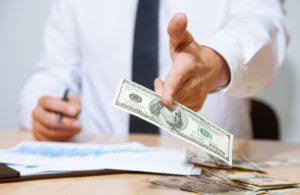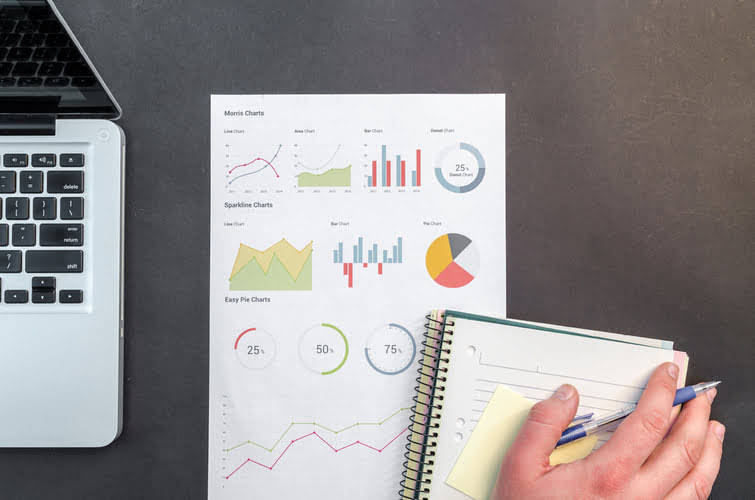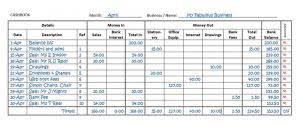
Unlike buildings or machinery, land does not deteriorate over time due to wear and tear. Its value typically appreciates or remains stable, making it ineligible for depreciation. Land holds intrinsic value and is often a cornerstone of real estate investments. Its enduring nature makes it a secure and valuable asset for businesses and investors, from prime commercial lots to sprawling agricultural land. Depreciable assets are crucial in business financial management, influencing everything from budgeting to tax liabilities.
What is a depreciation schedule?

By taking advantage of depreciation deductions, businesses can reduce their taxable income and better manage their cash flow. Non-depreciable assets may be accounted for through alternative methods such as revaluation, impairment testing, or specialized accounting treatments for investments and inventory. Adhering Retail Accounting to accounting standards and regulations is essential for fostering transparency, consistency, and comparability in financial reporting. Compliance with these standards enhances the credibility of financial statements, instills investor confidence, and facilitates informed decision-making by stakeholders. Adherence to regulatory requirements also mitigates the risk of penalties, sanctions, and reputational damage, safeguarding the organization’s financial integrity and sustainability.
- In addition, low-cost purchases with a minimal useful life are charged to expense at once, rather than being depreciated.
- Depreciation is a common accounting practice that allows businesses to allocate the cost of an asset over its useful life.
- However, if the home is rented out during the months you aren’t occupying it, then you can only depreciate a portion of the property’s cost.
- This reserve fund is used to fund future replacement costs, such as when an asset reaches the end of its useful life and needs to be replaced.
- This method is useful for companies that have large variations in production each year.
- Meanwhile, the Accumulated Depreciation is the total depreciation expense since the asset was acquired.
Units of production method
However, a business cannot depreciate an asset that it does not effectively own. For instance, if an airline hires an aircraft temporarily in anticipation of a busy season, it should not be considered as a depreciable property of the airline. As you probably know, the basic calculation of depreciation involves dividing the cost of a fixed asset over its useful life using a suitable depreciation method.
Can non-depreciable assets be amortized instead?
- My site utilizes a unique process that leverages AI and human subject matter expertise to create the best content possible.
- While there are several methods of calculating depreciation, the most important thing is to choose a method that is appropriate for the business and provides accurate information.
- When a fully depreciated asset is sold, the accounting treatment is a debit to the account for cumulative depreciation and a credit to the asset account.
- As you probably know, the basic calculation of depreciation involves dividing the cost of a fixed asset over its useful life using a suitable depreciation method.
- Their worth is influenced by market demand, rarity, and provenance, requiring expert appraisals for accurate valuation.
Choose an appropriate depreciation method based on your business needs, accounting regulations, and tax considerations. The most common methods include straight-line depreciation, declining balance depreciation, and units of production depreciation. A car, truck, van, and other vehicles used for business purposes are depreciable assets. The depreciation is based on factors such as the initial cost, expected usage, and ledger account estimated useful life of the vehicle. In addition, GAAP specifies the criteria for assessing useful life and residual values of depreciable assets.

Inventory and stocks are excluded from depreciation due to their role in business operations. Inventory is accounted for under the cost of goods sold (COGS), which reflects the direct costs of producing or purchasing goods sold during a specific period. Businesses use methods such as First-In, First-Out (FIFO), Last-In, First-Out (LIFO), or weighted average cost to calculate inventory values and COGS. Stocks, representing company ownership, are treated as capital assets and are not depreciated.
Staying Compliant with Tax Regulations

All the current assets, like receivables and cash in hand, cannot be claimed as depreciable assets. Other forms depreciable assets of depreciable business assets include intangible property such as computer software, copyrights, and patents. Depreciation is discussed in your intermediate accounting textbook in a few different ways.
- You’ll have a centralized accounting process without having to bounce between departments, wait for follow-ups from different team members, or ping some people back and forth.
- The delivery bike is a depreciable asset of the restaurant because its expected useful life is more than 12 months from its acquisition.
- Examples of depreciable assets include electronics, furniture, automobiles, etc.
- Compliance with these standards enhances the credibility of financial statements, instills investor confidence, and facilitates informed decision-making by stakeholders.
- Tickmark, Inc. and its affiliates do not provide legal, tax or accounting advice.
Accounts Payable Turnover: An Essential Metric for Driving Financial Efficiency and Growth

The machine has a salvage value of R3,000, a depreciable base of R27,000, and a five-year useful life. The van’s book value at the beginning of the second year is R15,000, or the van’s cost (R25,000) subtracted from its first-year depreciation (R10,000). Now, multiply the van’s book value (R15,000) by 40% to get a R6,000 depreciation expense in the second year.
